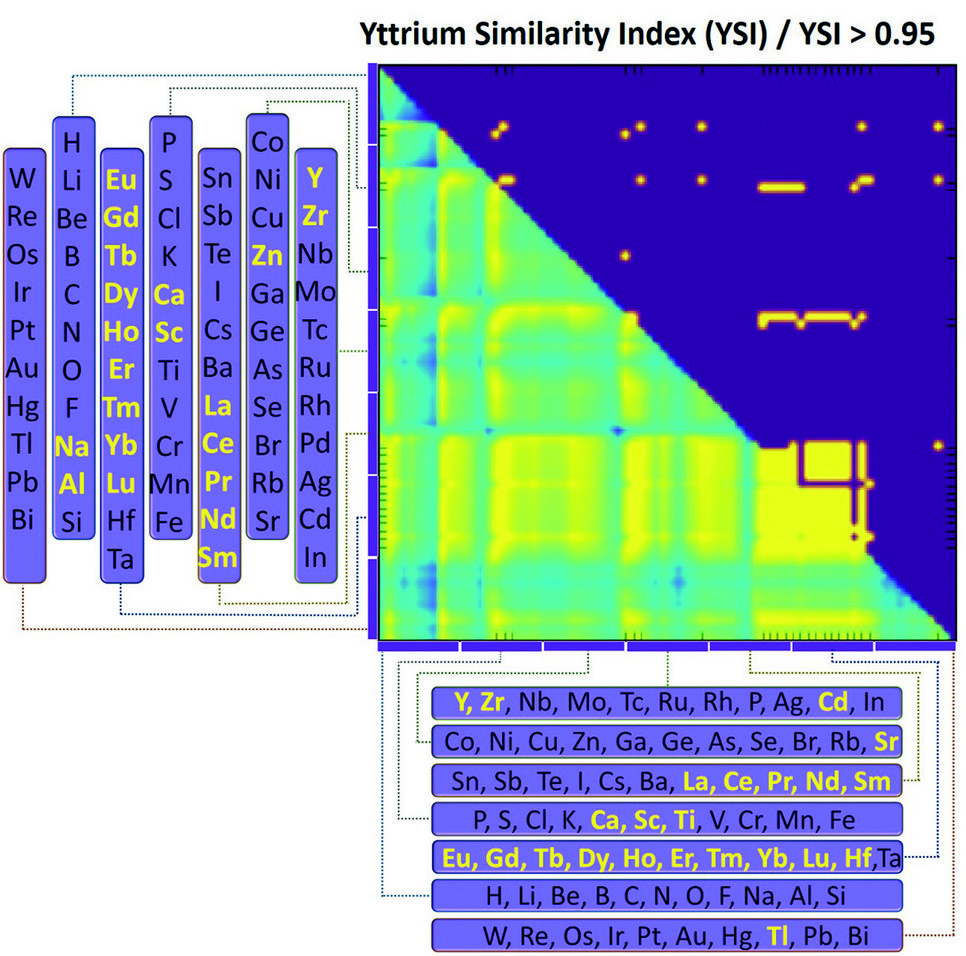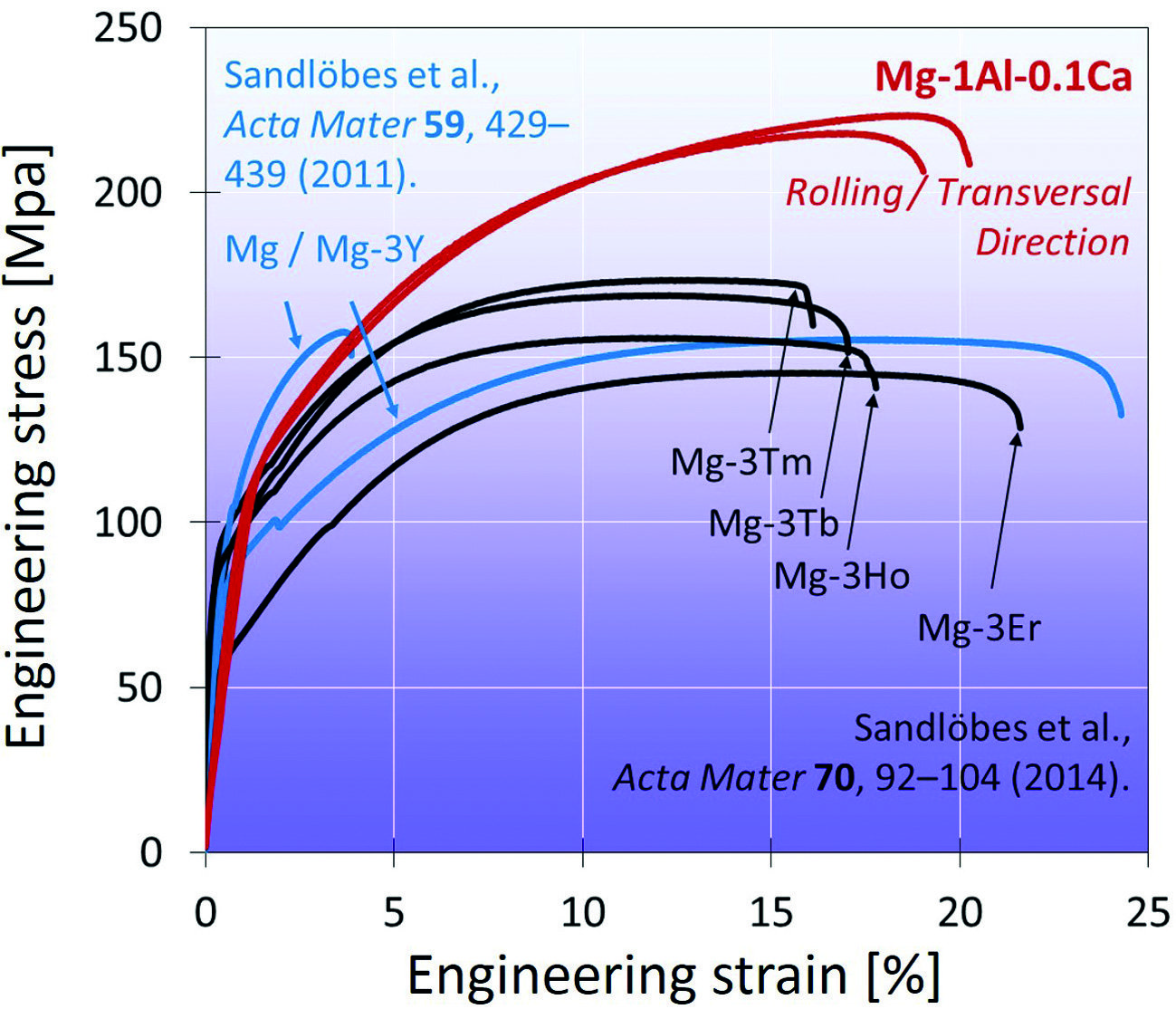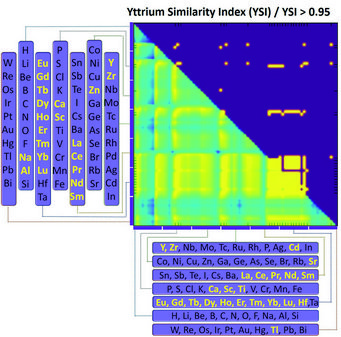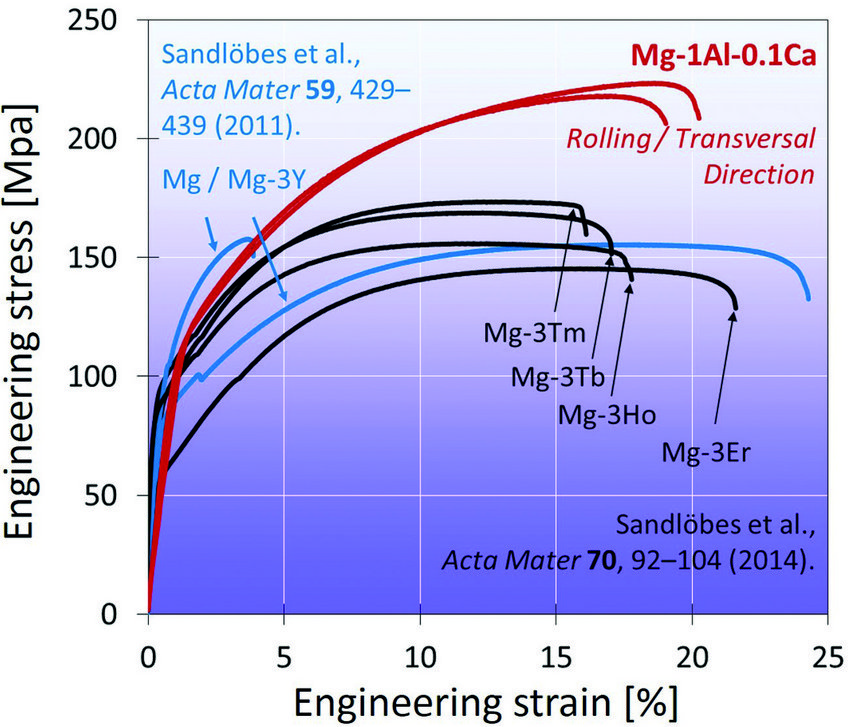Computational high-throughput design of ductile magnesium alloys
Magnesium alloys have an outstanding position in the search for the next-generation light-weight materials. However, their application is still hampered by their inherent brittleness. Based on an interdepartmental, computational high-throughput strategy, scientists at the MPIE have found a solution, which makes the material both ductile and affordable.

Fig. 1: Computed values of the yttrium-similarity index, YsI (Eq. 1) for the 2850 solute pairs computed in this study and visualized in the form of a symmetric matrix with yellow indicating a high similarity and blue a low one.
Thinking about light-weight structural materials, e.g., for automotive applications, Al alloys are often considered first. Although magnesium is 1.7 times lighter than Al and has a comparable price, its brittleness makes applications very rare. A few alloying strategies to improve the situation have been suggested in recent years, but are mostly ex-pensive due to the involvement of rather expensive and environment-unfriendly rare-earth elements such as yttrium. therefore, we have optimized the ductility of Mg alloys, by screening several thousand alloying concepts and identifying the most promising and economical solution [1].
The materials science approach required in the first place a reliable yet easily accessible descriptor for optimum mechanical properties. the experimental investigation performed at the department “Micro-structural Physics and Alloy Design“ identified the intrinsic stacking-fault energy as such a candidate. In con-trast to the dislocations processes required for the complete description of the underlying plasticity [2], this energy can be directly calculated by ab initio calculation em-ployed in the department “Computational Materials Design”. A direct screening of 18 transition metals as possible individual solutes did not identify better candidates than the previously identified rare-earth element yttrium [3]. Instead, it allowed us to identify, which physical properties distinguish the mechanical impact of yttrium from other solutes. Based on these insights, the yttrium similarity index (YsI, approach-ing 1 for yttrium-similar elements) was identified as a new figure of merit, which subsequently allowed to screen 2850 solute pairs within Mg with reasonable numerical effort (Fig. 1). Nevertheless, the evaluation of such widerange studies requires a reliable data management system. Our recently developed software framework pyiron does not only provide such a tool for automated data generation, storage, analysis and visualization, but at the same time an integrated developing environment for new materi-als concepts. As a result of this design strategy a Mg-Al-Ca system, namely, Mg-1Al-0.1Ca (wt.%) was found to show promising mechanical performance (YsI > 0.95), while still being in-expensive and non-toxic. Only afterwards, the tensile stress-strain behaviour of this alloy was compared with pure Mg and binary solid solution Mg-re and Mg-Y alloys (Fig. 2). the result was outstanding: a tensile elongation of about 20% (4x more ductile than pure Mg), a well-balanced constant work hardening, and an ultimate tensile strength of about 220 MPa (40% higher than pure Mg) [1]. Such a performance makes Mg alloys highly attractive for future materials science as well as light-weight applications.

Fig. 2: Engineering stress-strain curves of the new Mg-Al-Ca alloy in comparison with not engineered (other than simple homogenization treatment) solid solution Mg-Y, Mg-RE, pure Mg and Mg-Al-0.3Ca.
References:
Authors: T. Hickel, J. Neugebauer

